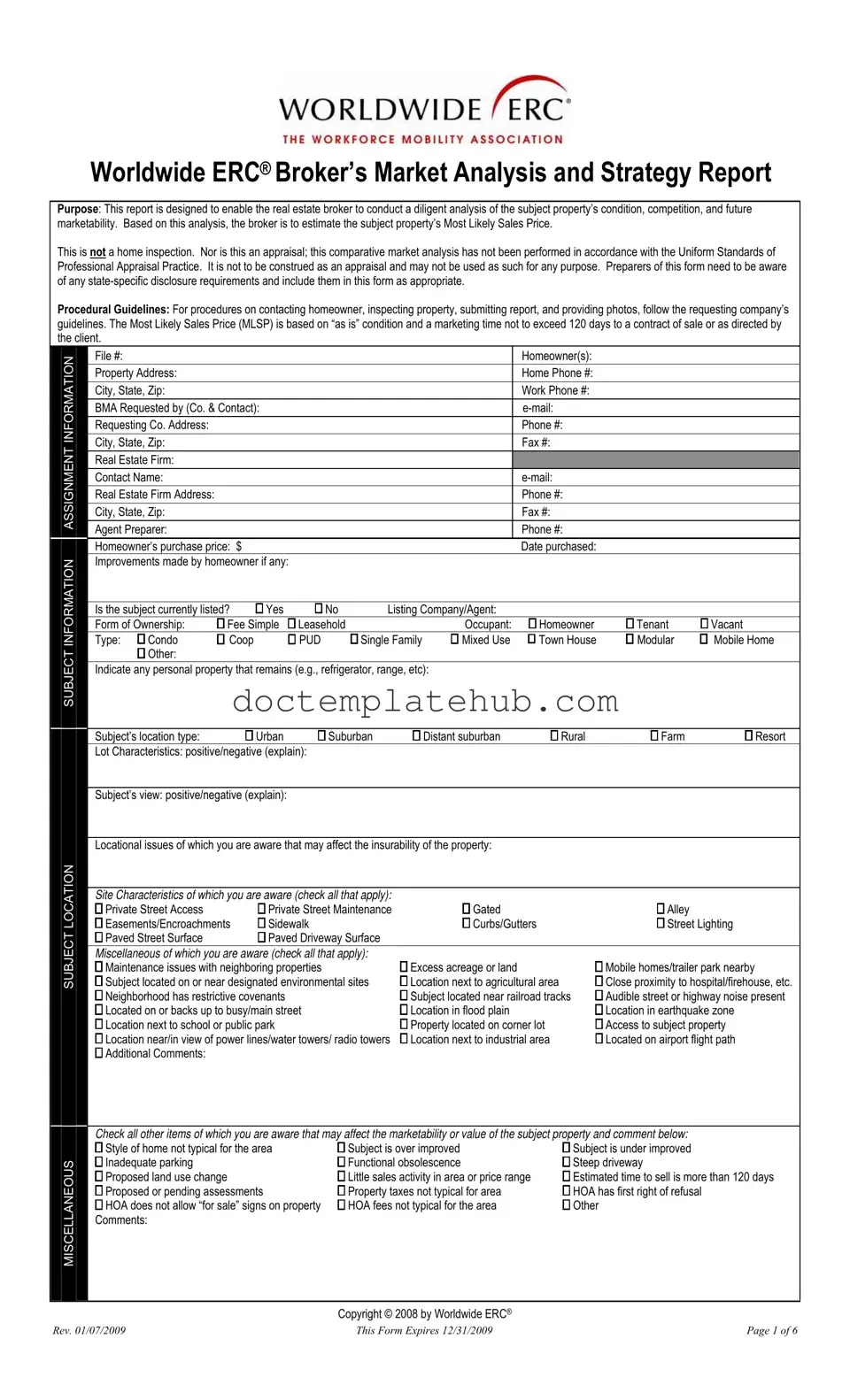What is the purpose of the ERC Broker Market Analysis form?
The ERC Broker Market Analysis form is designed to assist real estate brokers in conducting a thorough analysis of a property's condition, its competition, and its future marketability. By utilizing this form, brokers can estimate the Most Likely Sales Price (MLSP) for the property in question. It is important to note that this analysis is not a home inspection or an appraisal, and it should not be used as such. The form encourages brokers to be mindful of state-specific disclosure requirements and to incorporate them into their reports as necessary.
How should a broker prepare to fill out the ERC Broker Market Analysis form?
Before filling out the form, brokers should gather all relevant information regarding the subject property, including its location, condition, and any improvements made by the homeowner. It is essential to follow the procedural guidelines set by the requesting company for contacting homeowners, inspecting the property, and submitting the report. Additionally, brokers should be prepared to document any factors that may affect the property’s marketability, such as neighborhood characteristics and local market conditions.
What factors are considered when estimating the Most Likely Sales Price (MLSP)?
The estimation of the Most Likely Sales Price (MLSP) is based on the property's current condition, referred to as "as is," and assumes a marketing time of no more than 120 days to secure a contract of sale. Factors influencing this estimate include the property’s location, the condition of the home, the surrounding neighborhood, and the current market trends. Brokers are encouraged to consider recent comparable sales and active listings to support their price estimation.
What are some common issues that may affect the insurability of a property?
Several issues can impact the insurability of a property. These may include structural problems, environmental concerns, or the presence of easements and encroachments. Additionally, factors such as proximity to industrial areas, flood zones, or noise from nearby highways can also pose challenges. Brokers should be diligent in identifying and documenting any such issues, as they can significantly influence both the marketability and value of the property.
What should brokers keep in mind regarding state-specific disclosure requirements?
It is crucial for brokers to be aware of and comply with any state-specific disclosure requirements when filling out the ERC Broker Market Analysis form. Each state may have its own regulations regarding what must be disclosed to potential buyers. Brokers should ensure that they include all necessary disclosures in their reports to avoid legal complications and to provide a transparent assessment of the property. This diligence not only protects the broker but also serves the best interests of the homeowner and potential buyers.
